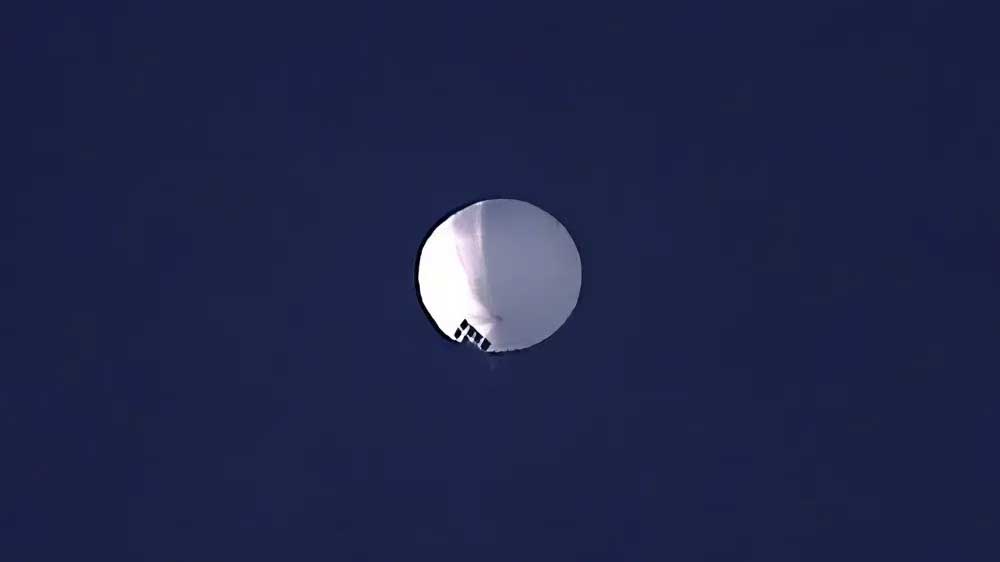Several countries use balloons for gathering information that aid their military strategies, but China has raised balloon spying to an art form, pursuing aerostat technology for over a decade, ironically, with not a little assistance from the West.
The sudden interest in spy balloons after the United States shot down a Chinese balloon throws light on aerostats—it means a range of things from powered airships (“blimps”) to unpowered balloons. They have long been associated with military applications, particularly information-gathering activities.
According to media reports, they hold numerous advantages in persistence and cost, and thus many of the Chinese organizations that produce them are directly funded by China’s military industry.
Reports delving into the history of Chinese affinity for spy balloons reveals that the country began taking interest in aerostats since when Mao Zedong was in power. However, their modern applications have been in play since 2010, when the National Air and Space Intelligence Center claimed that China considered aerostats desirable for their large surveillance area between 1,000 and 2,000 km, low radar profile, ability to persistently loiter above desirable locations, and for their relatively inexpensive operating costs.
In 2012, China unfurled its aim to expand aerostat development. At a seminar held at China’s Northwestern Polytechnical University, with extensive ties to the PLA and defense industry, it drew a wide range of participants, including Beihang University – it home to an aerostat company that the Biden administration sanctioned recently — the Chinese Aeronautical Society, and the PLA Air Force Equipment Research Institute.
The conference chiefly deliberated on “innovation, development, exchange, and cooperation” with the clearly military goal of deploying aerostats for “early warning, command and communication, and anti-submarine activities.” The conference sessions focused on ways to increase aerostat payloads, improve energy efficiency, and aerodynamics. Participants were asked to track aerostat developments internationally.
In 2020, the US-China Economic and Security Review Commission said that the “PLA envisions an overlapping network of satellites and near-space aerostats to provide redundant and persistent intelligence and targeting capabilities”. The value of that persistence is illustrated by not just the balloons crossing over US and other nations’ skies, but by China’s own aerostat makers. For example, the “China Electronics Technology Group Corporation claims that one of its model aerostat systems can stay aloft for two weeks, while the Aerospace Information Research Institute, claims its Jimu-1 can operate for months some 20 kilometers up in the air”.
China had originally deployed these balloons in the disputed territories in the South China Sea region. A balloon was discovered hovering over the Mischief Reef in 2019, near a Chinese base. Another was spotted near The Philippines in 2021.
These aerostats, supposed to run on solar power, float between 7 and 20 km above the Earth. In Chinese airspace, aerostats have been observed in Shandong, Tibet and Xinjiang, all regions close to sensitive borders or territorial claims. It is only thereafter that these aerostats started going west, as far as the United States.
As news of China’s new focus on aerostats spread, the United States blacklisted six Chinese organizations involved in their development. But to be fair to the Chinese, they had help from unlikely quarters – the American and European businesses had a role in developing China’s balloon industry for nearly a decade.
According to reports, “in 2015, the French company Flying Whales, which makes heavy-lift airships, sent leaders to sign a strategic cooperation agreement with China’s Special Vehicle Research Institute” and one of the first Chinese organizations to develop aerostats and stratospheric airships for intelligence collection,”SVRI is among the Chinese military’s premier aerostat suppliers”. It is also nestled several tiers down in the massive defense conglomerate Aviation Industry Corporation of China, where it is known as AVIC’s 605th Research Institute.
It is quite well known that the aerostat technology is closely linked to PLA strategies. The army has close associations with SVRI which surfaced when in a 2018 meeting, SVRI Director Zhang Mingwen emphasized SVRI’s mission was to “strengthen the military and enrich the people,” and said that SVRI would serve the needs of China’s “military construction”. The company also employs multiple specialists who participate in China’s “511 Talent Project” for national defense engineering and collection. But while AVIC is on the US government entity list for export control, SVRI and its immediate parent company are not.
In the same year, 2018, Texas-based Nanoracks signed a partnership “agreement with the China’s Kuang-Chi Science company to produce the Traveler series of near-space balloons”. The Traveler balloon would have various uses “from ecological and terrestrial observation to satellite deployment and space research”, Nanoracks was quoted as saying. Kuang-Chi also has a strategic cooperation agreement with the 7801 Research Institute, part of the China Aerospace Science and Industry Corporation. Known as CASIC, the giant military aerospace conglomerate is China’s largest producer of missiles. Kuang-Chi joined this giant’s aerostart industrialization project in Hunan to produce “self-controlled airships, tethered aerostats, and near-space aerostats.” The US sanctioned CASIC for its role in China’s military space and missile programs, reports said in 2020. Western analysts think with its large volume of work on aerostats, China is trying to reshape global security by thinking of technologies decades ahead of their coming in to being and the technologies being innocuous and innocent enough not to raise too many questions about their military benefits.

